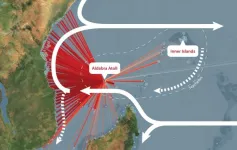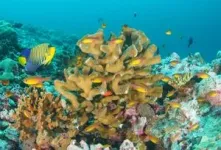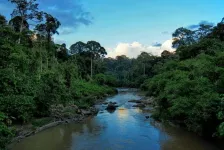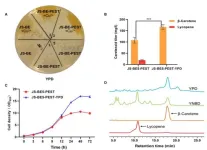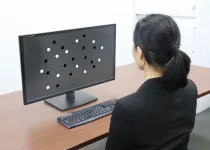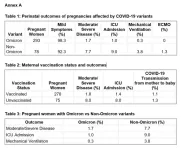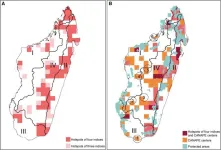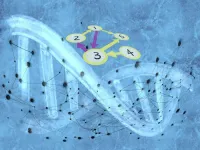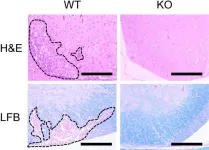Dr April Burt (Department of Biology, University of Oxford, and Seychelles Islands Foundation), lead author of the study, said: ‘This discovery is very important because a key factor in coral reef recovery is larval supply. Although corals have declined alarmingly across the world due to climate change and a number of other factors, actions can be taken at local and national scale to improve reef health and resilience. These actions can be more effective when we better understand the connectivity between coral reefs by, for instance, prioritising conservation efforts around coral reefs that act as major larval sources to support regional reef resilience.’
The researchers collaborated with a wide range of coral reef management organisations and the Seychelles government to collect coral samples from 19 different reef sites. A comprehensive genetic analysis revealed recent gene flow between all sample sites - possibly within just a few generations - suggesting that coral larvae may be frequently transferred between different populations. The results also hinted at the existence of a new cryptic species of the common bouldering coral, Porites lutea.
The genetic analyses were then coupled with oceanographic modelling, simulating the process of larval dispersal. These simulations allowed researchers to visualise the pathways coral larvae take to travel between reefs across the wider region, and determine the relative importance of physical larval dispersal versus other biological processes in setting coral connectivity.
This revealed that dispersal of coral larvae directly between reefs across the Seychelles is highly plausible. For example, coral larvae spawned at the remote Aldabra atoll could disperse westwards towards the east coast of Africa via the East African Coastal Current. From here, they would then travel north along the coast, with some potentially even reaching the South Equatorial Counter Current, which could bring them eastwards again back towards the Inner Islands of Seychelles.
While these long-distance dispersal events are possible, it is likely that much of the connectivity between remote islands across the Seychelles may be established through ‘stepping-stone’ dispersal. This suggests that centrally located coral reefs in Seychelles, and possibly East Africa, may play an important role in linking the most remote islands.
Dr Noam Vogt-Vincent (Department of Earth Sciences, University of Oxford, now based at the Hawai’i Institute of Marine Biology) who led the oceanographic modelling, said: ‘This research suggests that the broad agreement between predicted connectivity and observed genetic patterns supports the use of such larval dispersal simulations in reef system management in Seychelles and the wider region. These simulations also allow us to investigate how regular these connectivity patterns are in time, because a regular larval supply will be essential for reef recovery in the face of climate change.’
The modelling data can be visualised in a new app: with just one click you can see how coral larvae from Seychelles potentially reach reefs across the whole region. The researchers suggest that this data could help identify major larval sources to be prioritised for inclusion in marine protected areas or active reef restoration efforts.
Professor Lindsay Turnbull (Department of Biology, University of Oxford), senior author, said: ‘This study couldn’t come at a more timely moment. The world is once again watching, as El Niño devastates coral reefs throughout the Indian Ocean. Now we know which reefs will be crucial to coral recovery, but we can’t pause in our commitment to reducing greenhouse gas emissions and stopping climate change.’
Dr Joanna Smith and Helena Sims (The Nature Conservancy) who support the Seychelles Marine Spatial Plan Initiative said: ‘The WIO coral connectivity study, by illustrating the connectivity of reefs within a network, can be used at national and regional scales in the Western Indian Ocean for Marine Protected Area design and management, as well as directing restoration activities. We look forward to using the results and Coral Connectivity app to inform implementation of the Seychelles Marine Spatial Plan.’
ENDS
For further information and to request images and interviews, please contact:
April J Burt: april.burt@biology.ox.ac.uk
Noam Vogt-Vincent: nvogt@hawaii.edu
The study ‘Integration of population genetics with oceanographic models reveals strong connectivity among coral reefs across Seychelles’ will be published in Nature Scientific Reports at 10 am GMT / 6 am ET Tuesday 12 March 2024 at: DOI 10.1038/s41598-024-55459-x
You can view a copy of the study under embargo here (Note this is not to be shared further and is only a proof version).
Images relating to the study that can be used to illustrate articles (if they are credited) are available here: https://drive.google.com/drive/folders/1wS6yKIpOeNQxilhmR8N85PR-tHBvi031?usp=sharing (a word document includes captions and credit details). These are for editorial purposes only and cannot be distributed to third parties.
The University of Oxford
Oxford University has been placed number 1 in the Times Higher Education World University Rankings for the eighth year running, and number 3 in the QS World Rankings 2024. At the heart of this success are the twin-pillars of our ground-breaking research and innovation and our distinctive educational offer.
Oxford is world-famous for research and teaching excellence and home to some of the most talented people from across the globe. Our work helps the lives of millions, solving real-world problems through a huge network of partnerships and collaborations. The breadth and interdisciplinary nature of our research alongside our personalised approach to teaching sparks imaginative and inventive insights and solutions.
Through its research commercialisation arm, Oxford University Innovation, Oxford is the highest university patent filer in the UK and is ranked first in the UK for university spinouts, having created more than 300 new companies since 1988. Over a third of these companies have been created in the past five years. The university is a catalyst for prosperity in Oxfordshire and the United Kingdom, contributing £15.7 billion to the UK economy in 2018/19, and supports more than 28,000 full time jobs.
The Seychelles Islands Foundation
Seychelles Islands Foundation (SIF), is a non-profit charitable organisation that was established as a public trust by the government of Seychelles in 1979. SIF manages and protects the UNESCO World Heritage Sites of Aldabra Atoll and the Vallée de Mai and has the President of Seychelles, Wavel Ramkalawan, as Patron.
https://www.sif.sc/
END
